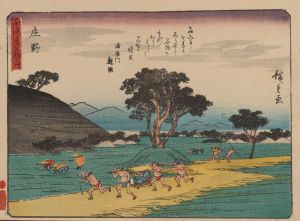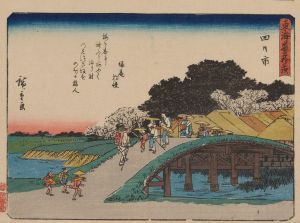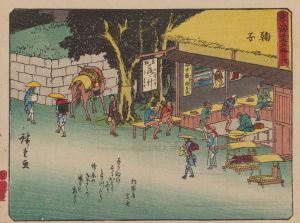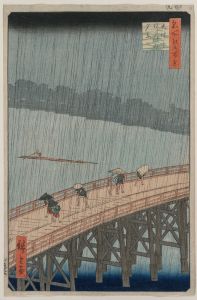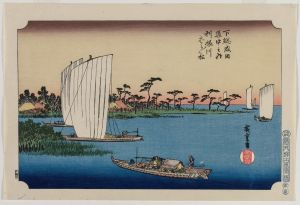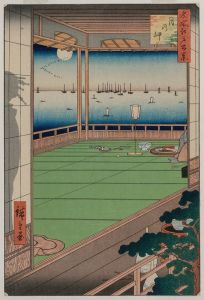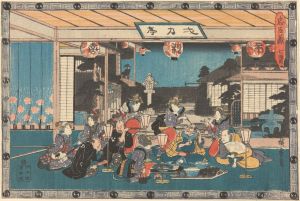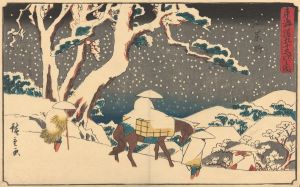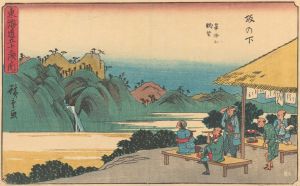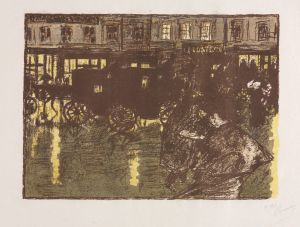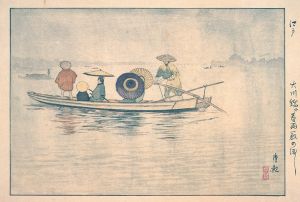
Night Rain at the Azuma Shrine
A hand-painted replica of Andō Hiroshige’s masterpiece Night Rain at the Azuma Shrine, meticulously crafted by professional artists to capture the true essence of the original. Each piece is created with museum-quality canvas and rare mineral pigments, carefully painted by experienced artists with delicate brushstrokes and rich, layered colors to perfectly recreate the texture of the original artwork. Unlike machine-printed reproductions, this hand-painted version brings the painting to life, infused with the artist’s emotions and skill in every stroke. Whether for personal collection or home decoration, it instantly elevates the artistic atmosphere of any space.
Andō Hiroshige, a renowned Japanese ukiyo-e artist of the Edo period, is celebrated for his landscape prints and depictions of nature. One of his notable works is "Night Rain at the Azuma Shrine," which exemplifies his mastery in capturing the transient beauty of the natural world and the atmospheric conditions that define it. Hiroshige's work is often associated with the ukiyo-e genre, which flourished in Japan from the 17th to the 19th centuries and is characterized by its woodblock prints and paintings.
"Night Rain at the Azuma Shrine" is part of Hiroshige's larger body of work that often focuses on scenes of travel and the changing seasons. While specific details about this particular piece are limited, it is consistent with Hiroshige's style, which frequently includes elements such as rain, mist, and the play of light and shadow to evoke mood and emotion. His ability to convey the essence of a scene with minimalistic yet expressive lines and colors is a hallmark of his artistic approach.
Hiroshige's landscapes often feature famous locations, and shrines were common subjects due to their cultural and spiritual significance in Japan. The Azuma Shrine, like many others, would have been a place of reverence and natural beauty, making it an ideal subject for Hiroshige's work. His prints often served as a form of visual travelogue, allowing viewers to experience the beauty of distant places from the comfort of their homes.
The use of rain in "Night Rain at the Azuma Shrine" is particularly significant, as rain is a recurring motif in Hiroshige's work. It serves to create a sense of atmosphere and mood, often evoking feelings of tranquility, melancholy, or introspection. The depiction of rain also showcases Hiroshige's skill in rendering the effects of weather, as he captures the way rain interacts with the landscape, the shrine, and any figures that may be present.
Hiroshige's influence extends beyond Japan, as his work had a significant impact on Western art, particularly during the Japonisme movement in the late 19th century. Artists such as Vincent van Gogh and Claude Monet were inspired by Hiroshige's compositions, use of color, and innovative perspectives. His ability to capture the fleeting moments of nature resonated with the Impressionists, who similarly sought to depict the effects of light and atmosphere in their work.
While specific information about "Night Rain at the Azuma Shrine" may be limited, it is clear that the piece embodies the qualities that make Hiroshige's work enduringly popular. His ability to convey the beauty and impermanence of nature through his prints continues to captivate audiences, offering a glimpse into the serene and contemplative world he so skillfully depicted.





